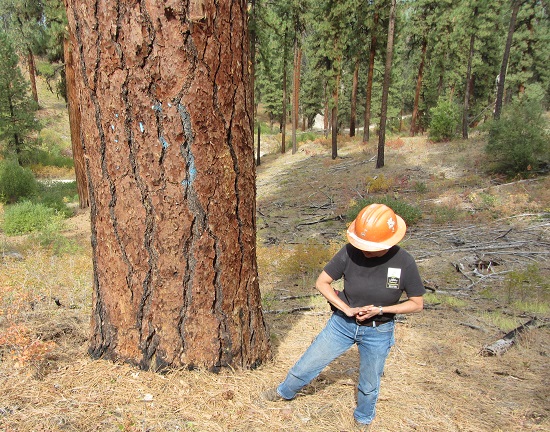 The Boise Basin Experimental Forest (BBEF) near Idaho City, Idaho, was established in 1933 to study management of ponderosa pine (Pinus ponderosa). The forest is 8,740 acres, which is divided into three units. The largest unit is a research natural area that has never been logged.
The Boise Basin Experimental Forest (BBEF) near Idaho City, Idaho, was established in 1933 to study management of ponderosa pine (Pinus ponderosa). The forest is 8,740 acres, which is divided into three units. The largest unit is a research natural area that has never been logged.
Ponderosa pine is the predominant forest cover type on the experimental forest. Currently, however, much of this type contains an undergrowth of Douglas-fir (Pseudotsuga menziesii). The presence and abundance of Douglas-fir reflects the lack of fire in the area over the last 100 years. Mountain shrub communities occur on shallow soil sites and on upper slopes and ridges.
Research and Resources -
Fire Communication & Education:
One-hundred years of wildfire research: a legacy of the Priest River, Deception Creek, and Boise Basin Experimental Forests of Idaho
Fire & Future Climate:
Experimental forests and climate change: views of long-term employees on ecological change and the role of Experimental Forests and Ranges in understanding and adapting to climate change
Fuel Treatments & Prescriptions:
A comprehensive guide to fuel management practices for dry mixed-conifer forests in the northwestern United States
Fuels treatments in ponderosa pine - Visits to the Boise National Forest and BBEF
Management Approaches:
Northern Rocky Mountain Experimental Forests: settings for science, management, and education alliances
Restoration:
Stand and fuel treatments for restoring old-growth ponderosa pine forests in the interior west (BBEF)